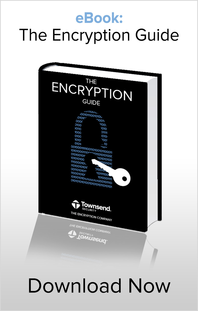Public and private organizations want to take advantage of cloud-based solutions to reduce costs and improve business performance. Organizations understand that the ultimate responsibility for the security of their data remains with them. Justifiable concerns about the security of cloud-based applications continue to worry security professionals and business executives.
 The following list of nine guidelines is intended to serve as a baseline indicator of the maturity and adequacy of the security of a cloud platform and cloud application offering. They are not intended to be exhaustive, but only serve as a set of key indicators. Additional security review of any cloud provider and cloud application should be performed before deployment or migration.
The following list of nine guidelines is intended to serve as a baseline indicator of the maturity and adequacy of the security of a cloud platform and cloud application offering. They are not intended to be exhaustive, but only serve as a set of key indicators. Additional security review of any cloud provider and cloud application should be performed before deployment or migration.
Security professionals (CIOs, CISOs, compliance officers, auditors, etc.) and business executives can use the following set of key indicators as a way to quickly assess the security posture of a prospective cloud provider and cloud-based application or service. Significant failures or gaps in these nine areas should be a cause for concern and suggest the need for a more extensive security review.
The sources for these guidelines include the Cloud Security Alliance, Payment Card Industry Data Security Standards (PCI DSS), the National Institute of Standards and Technology (NIST), the SANS Institute, and others.
The nine key indicators:
1) Inventory of Sensitive Data
All sensitive data processed and stored by the cloud application and service should be properly inventoried and published to stakeholders. Data retention policies should be published for all sensitive data.
2) Data Protection
The use of industry standard encryption for data at rest should be implemented for all sensitive information such social security numbers, credit card numbers, email addresses, and all other personally identifiable information. Encryption keys used to encrypt sensitive data should be protected by appropriately strong key encryption keys, and encryption keys should be stored away from the sensitive data and managed according to industry best practices (separation of duties, dual control, split knowledge, key rotation, etc.). Minimally, encryption key management systems should be validated to the FIPS 140-2 standard.
3) Business Continuity Plan
The cloud and application providers should have a published business continuity plan (BCP) that meets the minimum baseline needs of your organization. The business continuity plan should address backup and recovery, geographic redundancy, network resilience, storage redundancy and resilience, and other common components of a BCP.
4) Incident Response Plan
Both the cloud provider and the application provider should have a current incident response plan available to stakeholders. The plan should cover how incidents are discovered, the response plan for breaches, staff training, and management. All stakeholders should understand that security events are a matter of “when”, not “if”.
5) Active Monitoring
Actively monitoring of all aspects of the cloud and application environment is a core security principal. Real time log collection and monitoring is a minimum component of active monitoring. Additionally application and operating system configuration changes and access to decrypted sensitive data should be monitored (File Integrity Monitoring). Cloud provider infrastructure monitoring should be in place as well as stakeholder access to critical event information.
6) Multi-tenancy Data Isolation
Cloud-based applications and services inherently share computing resources across multiple customers. Proper segregation of your data from other customers using the application is crucial for your security posture. The cloud and application provider should provide credible assurance that there is adequate logical or physical separation of your data from all others sharing computing resources.
7) Vulnerability Assessment and Penetration Testing
Periodic vulnerability and penetration testing should be performed on the cloud provider infrastructure as well as the application environment. Any identified weaknesses should be addressed in a timely manner and disclosed to you and other stakeholders.
8) Independent Security Assessment
The cloud provider’s infrastructure used to host the application should be independently assessed for security compliance and best practices on a periodic basis, and no less than annually. The results should be available to you and other stakeholders. Examples would include SOC 2, SOC 3, SSAE 16, PCI assessment and letter of attestation, etc.
9) Contractual and Legal
Cloud and application providers should provide you with proper legal agreements including a Service Level Agreement (SLA) that defines mutual obligations. Be sure that you understand where you data will be stored and processed and that you understand geographic boundary controls. Additionally, be sure that the agreement between you and your cloud and application provider apply to any third parties who may have access to your data, or who may take possession of your data. Lastly, be sure that you receive prior notification before your data is released to law enforcement or any other governmental agency.

